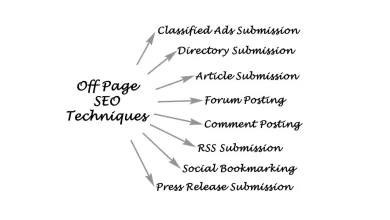What Does CPM Stand for in Advertising?

Are you new to the world of online advertising? Have you ever come across the term CPM while browsing through ad networks and wondered what it stands for? In this article, we will explore what CPM means and how it is used in the world of digital advertising.
Introduction
Online advertising has become an essential part of the marketing strategy for businesses of all sizes. As a result, various metrics and terminologies have emerged to help advertisers understand the effectiveness of their campaigns. One such term is CPM, which stands for cost per thousand impressions.
What Does CPM Stand for in Advertising?
CPM is a widely used metric in online advertising, and it represents the cost per thousand impressions. In other words, CPM is the price an advertiser pays for every 1000 times their ad is displayed on a website.
CPM is used by ad networks, publishers, and advertisers to measure the performance and effectiveness of ad campaigns. It is especially useful for brand awareness campaigns, where the focus is on reaching as many people as possible, rather than on conversions or clicks.
How Is CPM Calculated?
The calculation of CPM is straightforward. It is calculated by dividing the cost of the ad campaign by the number of impressions (in thousands) it generates.
CPM = (Cost of Campaign / Number of Impressions) x 1000
For example, if an advertiser spends $1000 on a campaign that generates 100,000 impressions, the CPM would be $10.
CPM vs. CPC vs. CPA
CPM is not the only metric used in online advertising. There are several others, such as CPC (cost per click) and CPA (cost per acquisition).
CPC is a metric that represents the cost an advertiser pays for each click on their ad. In contrast, CPA is a metric that represents the cost an advertiser pays for each conversion or acquisition (such as a sale or sign-up).
While CPM is useful for brand awareness campaigns, CPC and CPA are more relevant for campaigns that focus on driving traffic or conversions.
Advantages of Using CPM
There are several advantages to using CPM as a metric in online advertising:
1. Predictable Cost
CPM allows advertisers to have a predictable cost for their campaigns. They can calculate the cost of the campaign based on the number of impressions they want to generate.
2. High Reach
CPM is an effective metric for campaigns focused on reaching as many people as possible. Advertisers can use CPM to target a large audience and generate brand awareness.
3. Flexible Budgeting
CPM allows advertisers to set a budget for their campaigns, making it easy to control costs and allocate resources efficiently.
FAQs about CPM
Q1. What is a good CPM rate?
A1. CPM rates can vary depending on the industry, ad format, and targeting options. However, a good benchmark for CPM rates is around $2-$10 per thousand impressions.
Q2. Is CPM better than CPC?
A2. It depends on the campaign objective. CPM is better for campaigns focused on generating brand awareness, while CPC is better for campaigns focused on driving traffic and clicks.
Q3. How can I improve my CPM?
A3. To improve your CPM, you can optimize your ad targeting, improve ad placement, and use engaging ad creatives.
Q4. Does CPM guarantee clicks or conversions?
A4. No, CPM does not guarantee clicks or conversions. It is a metric used to measure the cost per thousand impressions.
Q5. Can CPM be used for social media advertising?
A5. Yes,
Using CPM in Social Media Advertising
CPM is also a widely used metric in social media advertising, where it represents the cost per thousand impressions on social media platforms such as Facebook, Instagram, and Twitter.
Social media advertising offers several targeting options, such as demographic, geographic, and interest-based targeting, which makes it possible for advertisers to reach a highly specific audience. CPM is an effective metric for social media campaigns focused on brand awareness and generating engagement.
Advantages of Using CPM in Social Media Advertising
1. Cost-Effective
CPM is a cost-effective metric for social media advertising. Advertisers can reach a large audience at a low cost per impression, making it an attractive option for businesses of all sizes.
2. Highly Targeted
Social media platforms offer highly targeted ad placement options, allowing advertisers to reach a specific audience. CPM is an effective metric for targeting a large audience with specific characteristics or interests.
3. Scalable
CPM is a scalable metric, which means that advertisers can adjust their campaigns’ budget and targeting to match their goals and objectives.
Conclusion
CPM is a crucial metric in online advertising that represents the cost per thousand impressions. It is used to measure the performance and effectiveness of ad campaigns, especially for brand awareness campaigns. While there are other metrics such as CPC and CPA, CPM remains a valuable tool for advertisers to control costs and generate brand awareness.
Whether you’re running an ad campaign on a website or social media platform, understanding CPM is essential to optimize your campaigns and reach your target audience effectively.



